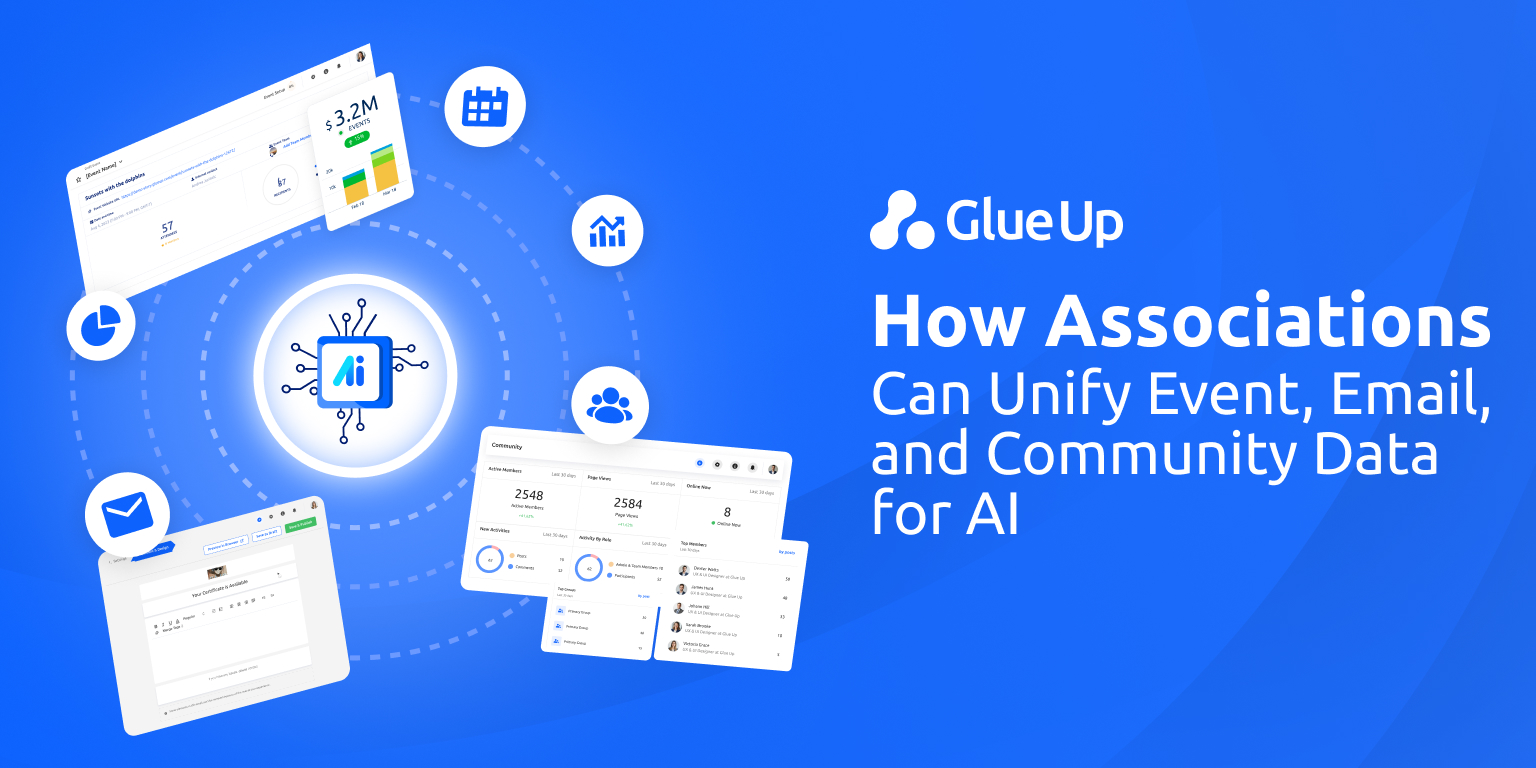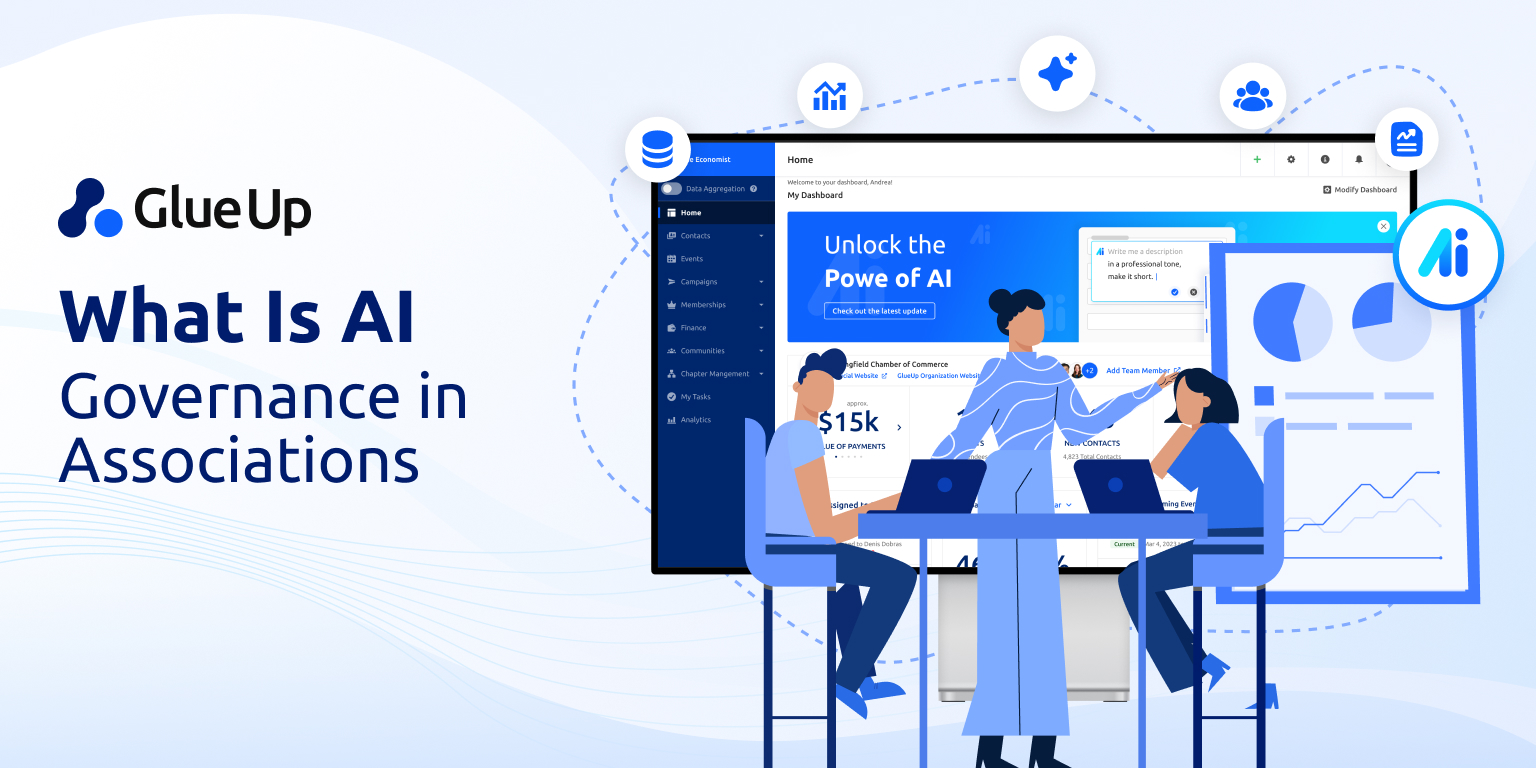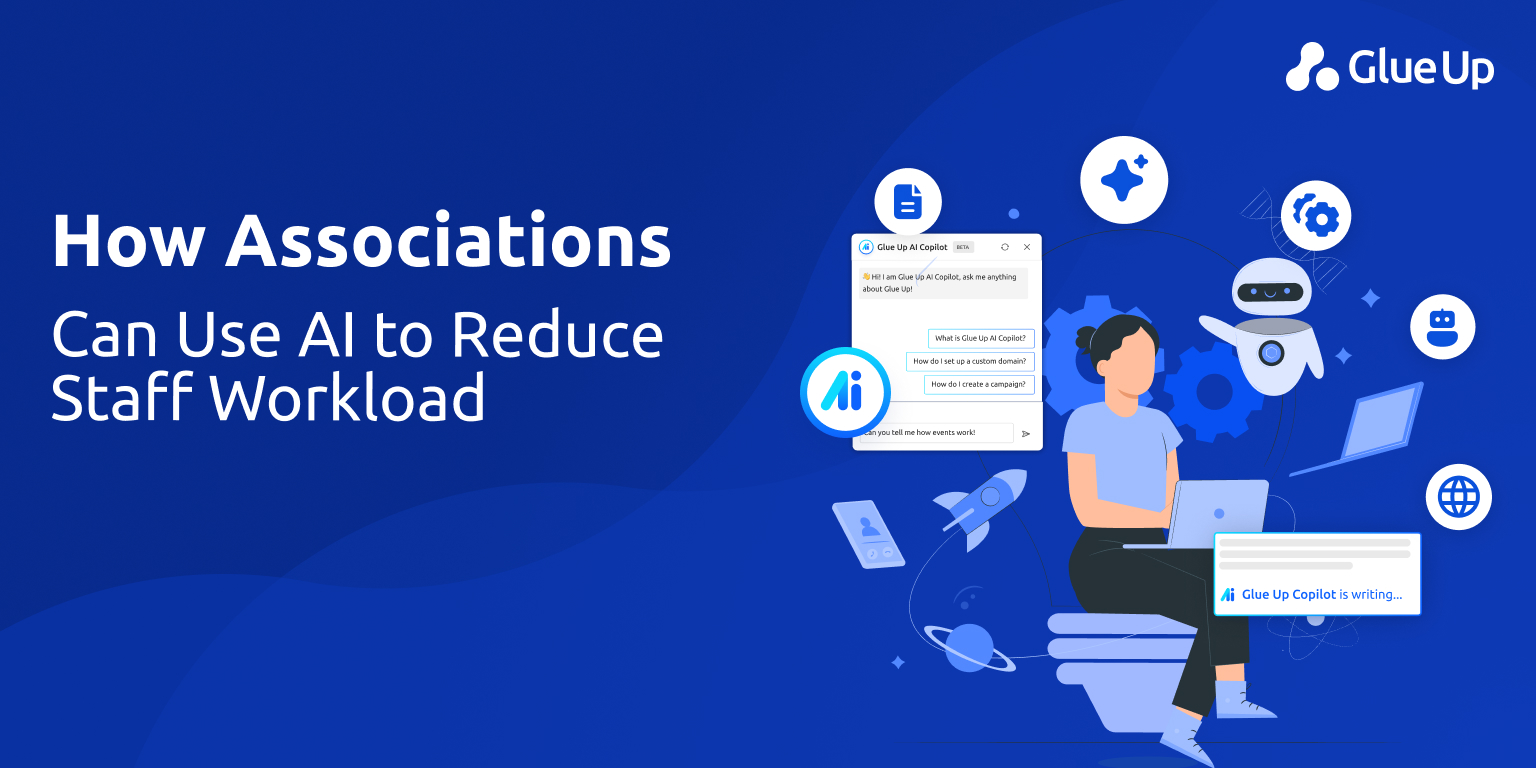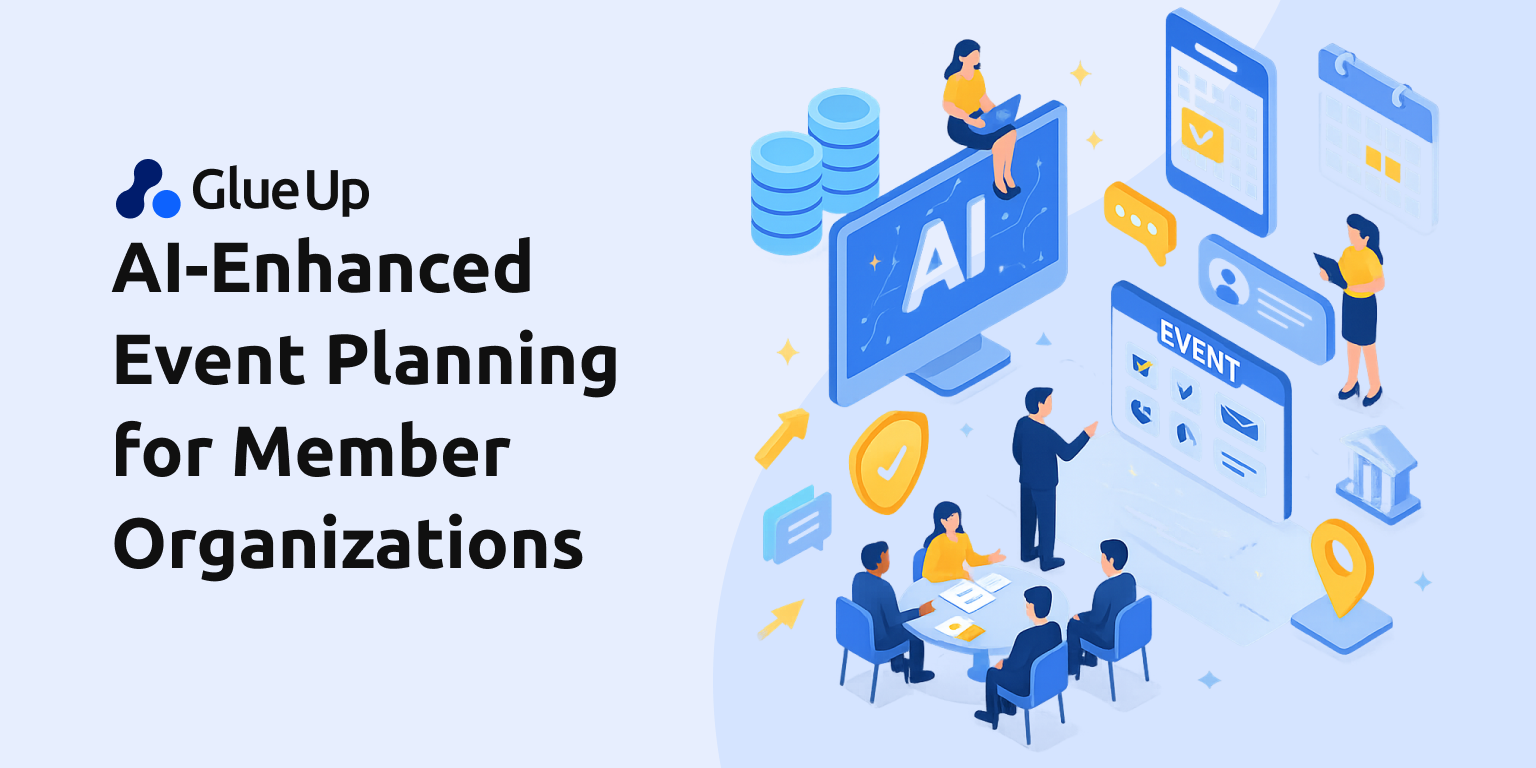
As event attendees now expect more from associations, i.e, personalized experiences, faster communication, mobile access, tailored agendas, and frictionless check-ins, internal teams are under more pressure than ever, e.g., dealing with tight budgets, limited staff, and increasing manual work.
Be it an annual conference or a networking mixer, these events are no longer just about showing up; they’re about delivering value that feels relevant and memorable. But pulling that off, especially at scale, is a real challenge; that’s where AI enters the conversation.
Artificial intelligence is already reshaping how event planners in associations and chambers get things done, making things quieter and more efficient, and it takes a lot off your plate.
This blog explores how AI helps event planners work smarter. From improving decision-making to enhancing attendee experiences and reducing manual work, we break down how member organizations can actually put AI to work behind the scenes.
What Is Event Management AI and Why Does It Matter Now?
Event management in AI refers to tools built into event planning platforms that help teams automate tasks, make smarter decisions, and deliver better experiences, without needing more staff or hours.
Furthermore, it can analyze attendee behavior, suggest personalized content, help you forecast attendance, recommend venues based on past data, and even flag low-performing sessions before the event begins. It works behind the scenes, using real-time and historical data to help planners make sharper, faster decisions.
As member-focused events are more demanding than ever. Your attendees expect customized agendas. Your sponsors want better ROI. Your team needs to do more with less. And leadership wants results they can track.
Traditional tools, such as spreadsheets, static emails, and manual registrations, can’t keep up anymore. AI solves this by plugging directly into your event workflow and quietly improving everything from outreach to follow-up.
In other words, AI matters now because expectations are rising, and the old systems weren’t designed to handle the pressure that member organizations face today.
AI Applications in Event Planning

AI is showing up in very practical ways across the entire event lifecycle. For member organizations, this means less time fighting systems and more time focusing on value.
Here’s how it’s being used:
1. Smart Registration Workflows
AI can help segment attendees based on past behavior, preferences, or membership type. Today, 70% of event planners are using AI to optimize processes like registration and attendee engagement. That means no more “one-size-fits-all” emails or forms, just tailored registration experiences that convert better.
2. Personalized Agenda Suggestions
AI will use your data from past sessions, interests, or job roles and suggest breakout sessions, speakers, or networking tracks that are more likely to resonate with each member. It’s like a Netflix-style recommendation engine for your events.
3. Predictive Attendance Modeling
Instead of guessing how many will show up, AI tools analyze past patterns, engagement signals, and registration timelines to give you a realistic picture. This helps avoid empty rooms or overbooking.
4. Automated Communications
AI can handle event reminders, schedule changes, venue information, and even post-event surveys can be triggered at just the right moment, without your team having to send emails manually.
5. Live Engagement Tracking
Some tools can now track in-session engagement, flag sessions with low interaction, and suggest in-the-moment adjustments, such as a poll, Q&A, or push notification, to re-engage your audience.
6. Post-event Insights
AI helps surface which sessions were successful, where drop-off occurred, and what could be improved next time, so you don't have to comb through spreadsheets and survey responses.
These aren’t theoretical; member organizations are already using AI in these ways to make every touchpoint smarter and easier to manage.
Operational and Strategic Benefits of AI in Event Management
Besides making events easier to run, it helps you rethink planning altogether. The benefits show up in two places: what happens behind the scenes (operations) and what happens at the leadership level (strategy).
Operational Benefits
- Less manual work: AI takes care of repetitive tasks, such as registration, sorting, sending reminders, and creating post-event reports. According to research, AI can automate nearly 70% of employee tasks, allowing teams to focus on higher-value work.
- Faster decision-making: AI provides real-time signals, so your staff can act quickly without waiting for end-of-day reports.
- Improved accuracy: AI leads you to fewer mistakes, resulting in a smoother experience for participants and less cleanup work for your team afterward.
Strategic Benefits
- Data-informed planning: AI turns your event data into usable planning tools. A study by EventMB found that 83% of event planners believe real-time data analytics improve their decision-making during events. You can see what your members actually attend, what they skip, and how they behave across events, not just one.
- Smarter budgeting: You can literally forecast attendance and track ROI by session or sponsor, and leadership can make more informed investment decisions for future events.
- Higher member satisfaction: Personalized experiences, timely communication, and smoother logistics don’t just make your team happy; they make your members feel seen and valued. That improves retention and renewal.
- Better internal alignment: When event data is easier to understand and share, your marketing, membership, and finance teams can finally plan in sync.
In short, AI gives you time back, cuts noise, and helps your team operate like a larger one, without needing more headcount.
How to Choose an AI-Powered Event Management Platform

If you’re a member-based organization looking for a platform that actually solves problems (not just adds buzzwords), here’s what to prioritize:
1. AI Built Into the Workflow, Not Bolted On
Look for platforms where AI isn’t just a widget on the side. It should be part of your core processes: registration, agenda planning, email automation, and post-event reporting. If it feels like an afterthought, it probably is.
2. Member-Centric Personalization
Your members aren’t generic attendees; they have roles, preferences, and histories. The right tool should recognize that and personalize experiences accordingly, whether that’s session suggestions or custom communications.
3. Real-Time Insights and Recommendations
The best platforms help your team make decisions in the moment. Think: “This session is underperforming, send a push notification,” or “This sponsor isn’t getting enough booth traffic, here’s a fix.”
4. Integrated Ecosystem
Avoid platforms that only handle one piece of the puzzle. Look for solutions that integrate with your CRM, email tools, mobile apps, and continuing education systems. One view of everything = less mess.
5. No Steep Learning Curve
AI should make your team’s work easier, not more confusing. If the interface feels like it requires an engineering degree, it’s probably not built for real-world use.
6. Clear Analytics That Support Board Reporting
You need reporting that your leadership team can understand and trust. Bonus points if it helps connect event success with larger organizational goals, such as member retention or Net Promoter Score (NPS).
Why Glue Up Fits the Profile of a Preferred Event Solution
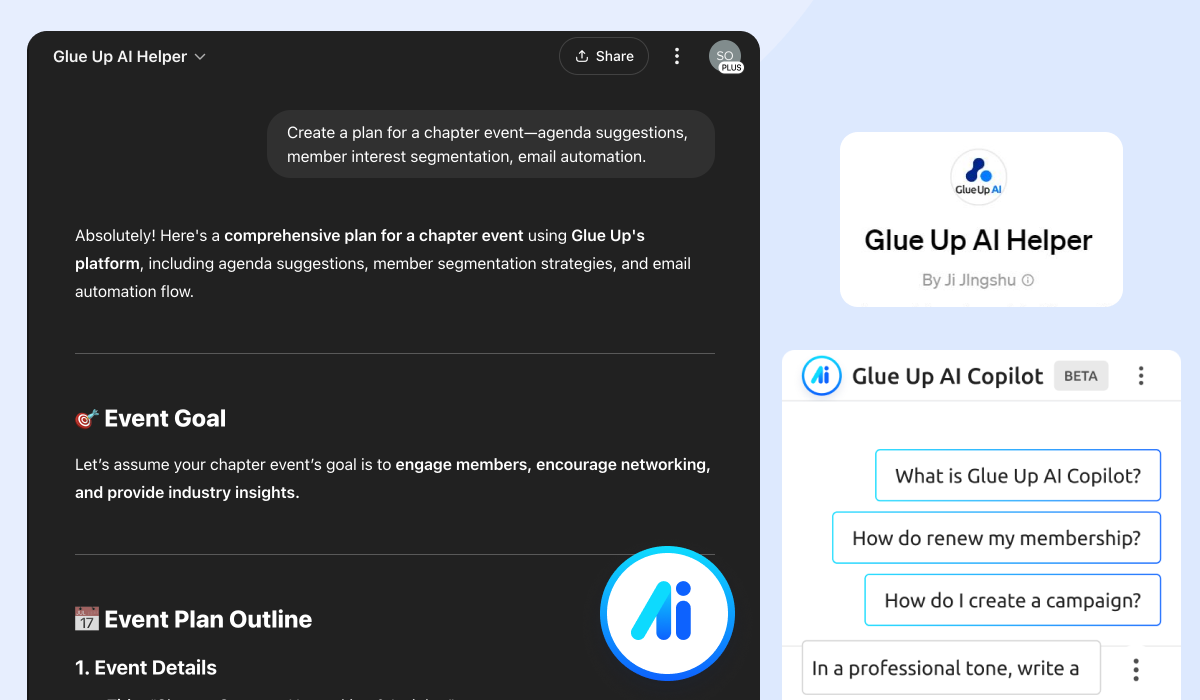
Glue Up brings all these features together in an all-in-one event management software built specifically for associations, chambers, and networks that run high-impact events.
From AI-powered automation and branded invitations to live engagement analytics, mobile check-ins, and post-event surveys, Glue Up offers a comprehensive toolkit to run smarter and more efficient events.
Everything is unified from registration to reporting, so your team can stop juggling tools and start focusing on results. And with CRM, email campaigns, mobile apps, and community tools all built in, Glue Up doesn’t just help you plan events, but it helps you grow long-term member value.
Book a demo and see how Glue Up makes AI-powered event planning simple, strategic, and built for your team.
Conclusion: AI Is No Longer Optional, It’s a Strategic Advantage
AI isn’t a futuristic luxury or a tech trend to keep an eye on. It’s already here, embedded in the systems that help the most agile associations and chambers run better events, drive stronger engagement, and spend less time reacting and more time leading.
The organizations that are quietly winning right now? They’re the ones using AI not to replace their teams, but to support them, taking care of the repetitive, predictive, and data-heavy tasks so that people can focus on strategy, creativity, and member connection.
If your events still feel like a scramble, or your team is stretched thin just keeping things running, it’s time to rethink your toolkit. AI isn’t just solving problems, it’s reshaping what’s possible, and that’s not optional for sure.

